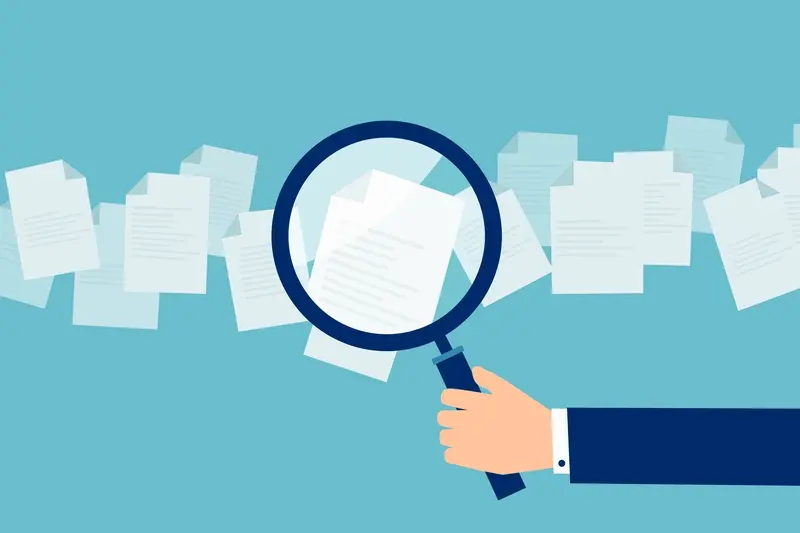How Do I Validate My App Idea Before Spending Money?
Nine out of ten apps fail within their first year. That's a staggering statistic that should make any entrepreneur pause before diving headfirst into app development. I've watched countless brilliant people pour their life savings into building apps that nobody wanted—not because the apps were poorly made, but because they never validated their ideas first.
App idea validation isn't just a buzzword thrown around in startup circles; it's your safety net. Think of it as doing your homework before the big test. You wouldn't build a house without checking if the ground can support it, so why would you build an app without checking if people actually want it?
The biggest risk is not taking any risk... but the second biggest risk is not validating your idea before you invest everything into it
This guide will walk you through the exact steps we use at Glance to help our clients validate their app ideas before spending a single penny on development. We'll cover market research, user testing, prototyping, and creating a business model that actually works. By the end, you'll have a clear roadmap to determine whether your app idea is worth pursuing—or whether it's time to go back to the drawing board.
Understanding What App Idea Validation Really Means
Let me be blunt with you—app idea validation isn't about asking your mum if she thinks your app is brilliant. She'll probably say yes because she loves you, but that won't stop your app from flopping spectacularly in the real world. Validation is about proving that real people have a real problem that your app can solve, and more importantly, that they're willing to pay for that solution.
Think of validation as your safety net before you spend thousands of pounds on development. It's the process of testing whether your app idea actually makes sense in the marketplace. This means talking to strangers, researching competitors, and sometimes discovering that your amazing idea already exists—or worse, that nobody actually wants it.
What Validation Actually Involves
Proper validation covers three main areas: market research, user feedback, and business viability. You need to understand who your users are, what they're currently doing to solve their problem, and whether they'd switch to your solution. It's not glamorous work, but it's the difference between building something people want and building something that sits forgotten in app stores.
The best part? Validation costs virtually nothing compared to full app development. You're essentially buying insurance against failure—and trust me, that's money well spent.
Researching Your Target Market and Competition
Right, let's talk about doing your homework—and I don't mean the boring kind you did at school! Before you get too excited about your brilliant app idea, you need to understand who actually wants it and what else is already out there. This isn't about being pessimistic; it's about being smart with your time and money.
Start by figuring out who your ideal users are. Not everyone will love your app, and that's perfectly fine. Are you targeting busy parents, fitness enthusiasts, or students? Get specific here—the more you know about these people, the better you can build something they'll actually use. Look at their age, interests, problems they face, and most importantly, how they currently solve those problems.
What Are Your Competitors Doing?
Now comes the fun part—spying on your competition! Download similar apps and use them properly. What do people love about them? What makes users complain in the reviews? This research goldmine will show you gaps in the market and help you avoid making the same mistakes others have made.
Read the one and two-star reviews of competitor apps carefully—they'll tell you exactly what users hate and what you can do better.
Don't panic if you find similar apps already exist. Competition usually means there's a real market for your idea, which is actually good news for your app idea validation process. If you're unsure about existing competition, check if your app idea already exists through thorough app store research and competitor analysis.
Testing Your Concept with Real People
Here's the thing about app ideas—they sound brilliant in your head but can fall completely flat when you share them with actual humans. I've watched countless entrepreneurs skip this step and later wonder why their "amazing" app sits at 12 downloads (half of which were probably their mum). Getting real feedback isn't optional; it's what separates successful apps from expensive mistakes.
Finding the Right People to Talk To
You don't need hundreds of people—quality beats quantity every time. Start with 10-15 individuals who match your target audience. Not your friends or family (they'll just tell you what you want to hear), but strangers who have no reason to spare your feelings. Social media groups, online forums, and local meetups are goldmines for finding these honest souls.
What Questions Should You Actually Ask?
Skip the "Would you use this app?" question—people lie. Instead, dig into their current behaviour and pain points. Here's what works:
- How do you currently solve this problem?
- What's the most frustrating part of your current solution?
- When did you last face this issue?
- What would make you switch from your current method?
Listen more than you talk. When someone says "interesting idea" with that particular tone, they're being polite—dig deeper to understand what they really mean.
Building a Simple Prototype or Mockup
Right, so you've done your research and tested your concept with real people—now it's time to bring your app idea to life visually. This is where building a simple prototype or mockup becomes your best friend in the app idea validation process. Think of it as creating a basic version of your app that people can actually see and interact with, without spending thousands on development.
Start with Paper Sketches
I know it sounds old-fashioned, but grab a pen and paper first. Sketch out your main app screens—the home page, key features, and user flow. This costs nothing and helps you think through how users will move around your app. Once you're happy with the basic layout, you can move to digital tools.
Use Simple Digital Tools
Tools like Figma, Sketch, or even PowerPoint can help you create clickable mockups that look surprisingly realistic. You don't need to be a designer; simple boxes and basic text work perfectly for validation purposes. The goal is showing people what your app might look like and how it would work.
A prototype is worth a thousand meetings—it shows exactly what you mean without endless explanations
Share your prototype with potential users and watch how they interact with it. Do they understand the navigation? Can they complete basic tasks? Their feedback at this stage is gold dust for your lean startup validation—and much cheaper than discovering problems after you've built the real thing. If you're ready to take the next step, consider building an MVP for your mobile app idea to test core features with real users.
Analysing Market Demand and Size
Right, so you've spoken to real people about your app idea and they seem interested—but here's where many entrepreneurs get a bit carried away. Just because your mates think it's brilliant doesn't mean there's a proper market for it. I've seen countless app ideas that had enthusiastic supporters but turned out to serve a market of about twelve people worldwide!
Finding Your Real Market Size
Start by looking at the numbers honestly. How many people actually have the problem you're solving? Not everyone in the world, not even everyone in your country—be realistic about who would genuinely use your app regularly. Google Trends is your friend here; search for terms related to your app's purpose and see if people are actually looking for solutions like yours.
Understanding Demand vs Interest
There's a massive difference between someone saying "oh that sounds useful" and actually downloading your app when it launches. Look at existing apps in similar spaces—how many downloads do they have? What are people saying in reviews? Are they complaining about missing features that your app could provide? If you can't find any apps doing something similar, that might be a red flag rather than a green light. Sometimes there's no competition because there's no real demand, not because you've stumbled upon a goldmine. To properly assess this, learn how to test if your app idea has market potential using proven research methods.
Creating a Business Model That Actually Works
Right, so you've validated your app idea with real people and the feedback is positive—brilliant! But here's where many founders stumble: they forget to work out how they'll actually make money from their app. I've seen too many great ideas fail because the business model was an afterthought rather than a core part of the validation process.
Your business model isn't just about making money (though that's rather important!). It's about understanding who pays, what they pay for, and why they'll keep paying. During app idea validation, you need to test whether people will actually open their wallets, not just whether they like your concept. The good news is that you can explore how to validate your app idea without writing a single line of code first.
Common App Business Models
- Freemium—free basic version with paid premium features
- Subscription—monthly or yearly recurring payments
- One-time purchase—single upfront payment
- In-app purchases—buying extras within the app
- Advertising—showing ads to free users
The trick is matching your model to your audience's behaviour. If your target users hate subscriptions, don't force one on them. Test different pricing approaches during validation—ask potential users directly what they'd prefer to pay and how much they'd realistically spend.
Test your pricing strategy by asking potential users: "Would you pay £5 monthly for this?" Then try different amounts. Their reactions will tell you everything you need to know about willingness to pay.
Remember, a validated app idea without a working business model is just an expensive hobby project waiting to happen.
Conclusion
Right then, we've covered a lot of ground together and by now you should have a pretty clear picture of whether your app idea has legs or not. The thing is, most people skip these validation steps completely—they get excited about their idea and jump straight into development. I can't tell you how many times I've seen brilliant entrepreneurs lose thousands of pounds because they didn't do this groundwork first.
What you've learned here isn't just theory; it's the exact process we use at Glance when evaluating new projects. Market research, talking to real users, building prototypes, checking your business model—these aren't nice-to-haves, they're must-haves. Each step builds on the last one, giving you more confidence (or helping you pivot before it's too late).
Here's the reality: validation doesn't guarantee success, but it massively improves your odds. You might discover your original idea needs tweaking, or you might find a completely different problem worth solving. Both outcomes are wins because they save you from building something nobody wants. Once you've validated your concept thoroughly, you'll be ready to explore turning your app idea into reality with confidence.
Now here's what I want you to do next—don't overthink it. Pick one validation method from this guide and start today. Whether that's interviewing five potential users or sketching out a simple prototype, just begin. Your future self will thank you for taking the time to get this right.
Share this
Subscribe To Our Learning Centre
You May Also Like
These Related Guides

How Do I Know If My App Idea Will Actually Make Money?

How Do I Know If My App Idea Already Exists?



